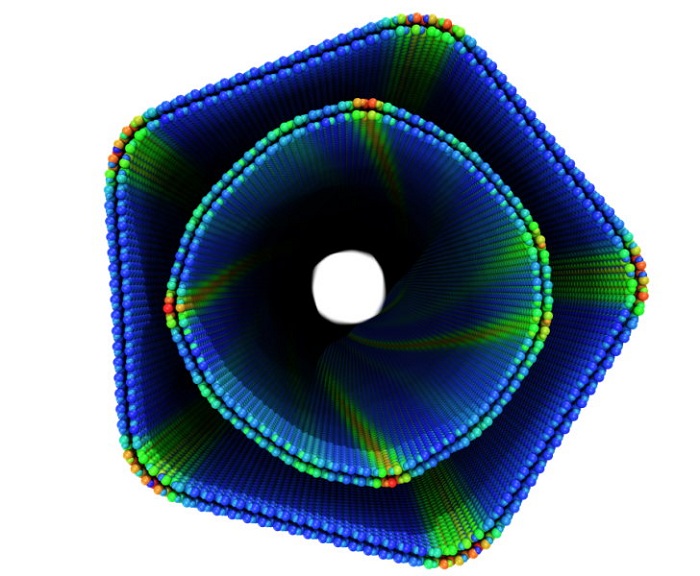“We began with a series of experimental observations which showed that very similar nanotubes exhibit different frictional properties, with intensities ranging up to two orders of magnitude,” says Roberto Guerra, a researcher at CNR-IOM and the International School for Advanced Studies (SISSA) in Trieste, first author of the study. “This led us to hypothesize that the chirality of the materials may play a role in this phenomenon.” The study involving also Andrea Vanossi (CNR-IOM) and Erio Tosatti (SISSA), was conducted in collaboration with the University of Tel Aviv.
For materials, such as those used in the study, chirality is linked to the three-dimensional arrangement of the weft that form the nanotube. “If we wrap a sheet of lined paper around itself to form a tube, the angle that the lines form with the axis of the tube determines its chirality,” says Guerra. “In our work we reconstructed the behavior of double-walled nanototubes, which can be imagined as two tubes of slightly different diameters, one inside the other. We observed that the difference in chirality between the inner tube and the outer tube has a remarkable effect on the three-dimensional shape of the nanotubes.”
A polygonal tube
“If we continue with the paper metaphor, the difference in orientation between the lattice on the inner tube and the outer tube determine to what extent, and, in what way, planar regions (faces) along the tube will form,” says Guerra. To better understand what is meant by “faces,” imagine a cross section of the tube, which is polygonal rather than perfectly circular. “The smaller the difference in chirality, the clearer and more obvious the faces,” concludes Guerra. If, however, the difference in chirality becomes too large, the faces disappear and the nanotubes take on the classic cylindrical shape.
The faces appear spontaneously depending on the characteristics of the material. Double-walled carbon nanotubes tend to form with a greater difference in internal and external chirality compared to boron nitride. Therefore, the former usually maintains a cylindrical shape that allows for less friction. In further studies, Guerra and colleagues intend to work directly on measuring the level of friction between nanotubes.
More about:
















































